-
EXECUTIVE SUMMARY 16
-
MARKET SUMMARY 16
-
MARKET INTRODUCTION 18
-
DEFINITION 18
-
SCOPE OF THE STUDY 18
-
RESEARCH OBJECTIVES 18
-
MARKET STRUCTURE 19
-
RESEARCH METHODOLOGY 20
-
MARKET DYNAMICS 27
-
INTRODUCTION 27
-
DRIVERS 28
- RISING LABOUR COSTS AND SAFETY CONCERNS 28
- GROWING PRESENCE OF START-UP COMPANIES PROVIDING ROBOTIC SOLUTIONS FOR WAREHOUSE AUTOMATION 28
- DRIVERS IMPACT ANALYSIS 29
-
RESTRAINT 30
- HIGH INTEGRATION AND SWITCHING COSTS 30
- RESTRAINT IMPACT ANALYSIS 30
-
OPPORTUNITY 30
- DIGITIZATION OF SUPPLY CHAIN PROCESSES WITH INTEGRATION OF IOT EQUIPMENT 30
-
COVID-19 IMPACT ANALYSIS 31
- IMPACT OF COVID-19 ON THE ELECTRONICS INDUSTRY 31
- IMPACT OF COVID-19 ON SUPPLY CHAIN DELAYS 31
-
MARKET FACTOR ANALYSIS 33
-
SUPPLY CHAIN ANALYSIS 33
- DESIGN & DEVELOPMENT 33
- COMPONENT SUPPLY 33
- MANUFACTURE/ASSEMBLY 34
- END USE 34
-
PORTER’S FIVE FORCES MODEL 35
- THREAT OF NEW ENTRANTS 35
- BARGAINING POWER OF SUPPLIERS 36
- THREAT OF SUBSTITUTES 36
- BARGAINING POWER OF BUYERS 36
- INTENSITY OF RIVALRY 36
-
GLOBAL AUTOMATED MATERIAL HANDLING MARKET, BY COMPONENT 37
-
OVERVIEW 37
- MARKET ESTIMATES & FORECAST, 2025-2034 37
- SOFTWARE 38
- SERVICES 39
-
GLOBAL AUTOMATED MATERIAL HANDLING MARKET, BY OPERATION 41
-
OVERVIEW 41
- MARKET ESTIMATES & FORECAST, 2025-2034 41
- PACKAGING & DISTRIBUTION 42
- STORAGE & TRANSPORTATION 42
- WASTE MANAGEMENT 42
- ASSEMBLY 42
-
GLOBAL AUTOMATED MATERIAL HANDLING MARKET, BY EQUIPMENT 43
-
OVERVIEW 43
- MARKET ESTIMATES & FORECAST, 2025-2034 43
- AUTOMATED GUIDED VEHICLES 44
- ROBOTIC SYSTEM 44
- CONVEYORS 44
- AUTOMATED CRANES 44
- AUTOMATED STORAGE & RETRIEVAL SYSTEM 44
-
GLOBAL AUTOMATED MATERIAL HANDLING MARKET, BY APPLICATION 45
-
OVERVIEW 45
- MARKET ESTIMATES & FORECAST, 2025-2034 45
- E-COMMERCE 46
- FOOD & BEVERAGES 46
- AUTOMOTIVE 46
- SEMICONDUCTOR & ELECTRONICS 47
- HEALTHCARE 47
- AVIATION 47
- CHEMICALS 47
-
GLOBAL AUTOMATED MATERIAL HANDLING MARKET, BY REGION 48
-
OVERVIEW 48
- MARKET ESTIMATES & FORECAST, 2025-2034 48
-
NORTH AMERICA 50
- US 57
- CANADA 60
- MEXICO 63
-
EUROPE 66
- UK 72
- GERMANY 75
- FRANCE 78
- ITALY 81
- REST OF EUROPE 84
-
ASIA-PACIFIC 87
- CHINA 94
- JAPAN 97
- INDIA 100
- SOUTH KOREA 103
- REST OF ASIA-PACIFIC 106
-
REST OF THE WORLD 109
- MIDDLE EAST & AFRICA 116
- SOUTH AMERICA 119
-
COMPETITIVE LANDSCAPE 122
-
OVERVIEW 122
-
MARKET SHARE ANALYSIS 123
-
COMPETITIVE BENCHMARKING 124
-
COMPETITOR DASHBOARD 125
-
KEY DEVELOPMENTS & GROWTH STRATEGIES 126
- PRODUCT LAUNCHES/PRODUCT DEVELOPMENTS/SERVICE DEPLOYMENTS 126
- MERGERS & ACQUISITIONS/EXPANSIONS/PARTNERSHIPS/JOINT VENTURES 128
-
COMPANY PROFILE 130
-
SCHAEFER SYSTEMS INTERNATIONAL PVT LTD 130
- COMPANY OVERVIEW 130
- FINANCIAL OVERVIEW 130
- PRODUCTS OFFERED 131
- KEY DEVELOPMENTS 132
- KEY STRATEGIES 132
-
DAIFUKU CO. LTD 133
- COMPANY OVERVIEW 133
- FINANCIAL OVERVIEW 133
- PRODUCTS OFFERED 133
- KEY DEVELOPMENTS 135
-
DEMATIC 136
- COMPANY OVERVIEW 136
- FINANCIAL OVERVIEW 136
- PRODUCTS OFFERED 137
- KEY DEVELOPMENTS 138
- SWOT ANALYSIS 139
- KEY STRATEGIES 139
-
MURATA MACHINERY, LTD. 140
- COMPANY OVERVIEW 140
- FINANCIAL OVERVIEW 140
- PRODUCTS OFFERED 140
- KEY DEVELOPMENTS 142
- KEY STRATEGIES 142
-
MECALUX, S.A. 143
- COMPANY OVERVIEW 143
- FINANCIAL OVERVIEW 143
- PRODUCTS OFFERED 143
- KEY DEVELOPMENTS 144
- KEY STRATEGIES 144
-
VANDERLANDE INDUSTRIES B.V. 145
- COMPANY OVERVIEW 145
- FINANCIAL OVERVIEW 145
- PRODUCTS OFFERED 145
- KEY DEVELOPMENTS 147
- KEY STRATEGIES 148
-
BEUMER GROUP 149
- COMPANY OVERVIEW 149
- FINANCIAL OVERVIEW 149
- PRODUCTS OFFERED 149
- KEY DEVELOPMENTS 151
- KEY STRATEGIES 151
-
SWISSLOG AG 152
- COMPANY OVERVIEW 152
- FINANCIAL OVERVIEW 152
- PRODUCTS OFFERED 153
- KEY DEVELOPMENT 153
- KEY STRATEGIES 153
-
KARDEX 154
- COMPANY OVERVIEW 154
- FINANCIAL OVERVIEW 154
- PRODUCTS OFFERED 155
- KEY DEVELOPMENTS 156
- KEY STRATEGIES 156
-
HONEYWELL INTELLIGRATED 157
- COMPANY OVERVIEW 157
- FINANCIAL OVERVIEW 157
- PRODUCTS OFFERED 158
- KEY DEVELOPMENTS 158
- SWOT ANALYSIS 159
- KEY STRATEGIES 159
-
TOYOTA INDUSTRIES CORPORATION 160
- COMPANY OVERVIEW 160
- FINANCIAL OVERVIEW 160
- PRODUCTS OFFERED 161
- KEY DEVELOPMENTS 162
- SWOT ANALYSIS 163
- KEY STRATEGIES 163
-
KNAPP AG 164
- COMPANY OVERVIEW 164
- FINANCIAL OVERVIEW 164
- SOLUTIONS OFFERED 165
- KEY DEVELOPMENT 165
- KEY STRATEGIES 165
-
HYSTER-YALE MATERIALS HANDLING, INC. 166
- COMPANY OVERVIEW 166
- FINANCIAL OVERVIEW 166
- SOLUTIONS OFFERED 167
- KEY DEVELOPMENTS 168
- SWOT ANALYSIS 168
- KEY STRATEGIES 168
-
TGW LOGISTICS GROUP 169
- COMPANY OVERVIEW 169
- FINANCIAL OVERVIEW 169
- SOLUTIONS OFFERED 169
- KEY DEVELOPMENTS 170
-
JOHN BEAN TECHNOLOGIES 171
- COMPANY OVERVIEW 171
- FINANCIAL OVERVIEW 171
- PRODUCTS OFFERED 172
- KEY DEVELOPMENTS 172
- SWOT ANALYSIS 173
- KEY STRATEGIES 173
-
LIST OF TABLES
-
GLOBAL AUTOMATED MATERIAL HANDLING MARKET, BY COMPONENT, 2025-2034(USD MILLION) 37
-
GLOBAL AUTOMATED MATERIAL HANDLING MARKET, BY SOFTWARE, 2025-2034(USD MILLION) 38
-
GLOBAL AUTOMATED MATERIAL HANDLING MARKET, BY SERVICES, 2025-2034(USD MILLION) 40
-
GLOBAL AUTOMATED MATERIAL HANDLING MARKET, BY OPERATION, 2025-2034(USD MILLION) 41
-
GLOBAL AUTOMATED MATERIAL HANDLING MARKET, BY EQUIPMENT, 2025-2034(USD MILLION) 43
-
GLOBAL AUTOMATED MATERIAL HANDLING MARKET, BY APPLICATION, 2025-2034(USD MILLION) 46
-
GLOBAL AUTOMATED MATERIAL HANDLING MARKET, BY REGION, 2025-2034(USD MILLION) 49
-
NORTH AMERICA: AUTOMATED MATERIAL HANDLING MARKET, BY COUNTRY, 2025-2034(USD MILLION) 50
-
NORTH AMERICA: AUTOMATED MATERIAL HANDLING MARKET, BY COMPONENT, 2025-2034(USD MILLION) 51
-
NORTH AMERICA: AUTOMATED MATERIAL HANDLING MARKET, BY SOFTWARE, 2025-2034(USD MILLION) 52
-
NORTH AMERICA: AUTOMATED MATERIAL HANDLING MARKET, BY SERVICES, 2025-2034(USD MILLION) 53
-
NORTH AMERICA: AUTOMATED MATERIAL HANDLING MARKET, BY OPERATION, 2025-2034(USD MILLION) 54
-
NORTH AMERICA: AUTOMATED MATERIAL HANDLING MARKET, BY EQUIPMENT, 2025-2034(USD MILLION) 55
-
NORTH AMERICA: AUTOMATED MATERIAL HANDLING MARKET, BY APPLICATION, 2025-2034(USD MILLION) 56
-
US: AUTOMATED MATERIAL HANDLING MARKET, BY COMPONENT, 2025-2034(USD MILLION) 57
-
US: AUTOMATED MATERIAL HANDLING MARKET, BY SOFTWARE, 2025-2034(USD MILLION) 57
-
US: AUTOMATED MATERIAL HANDLING MARKET, BY SERVICES, 2025-2034(USD MILLION) 58
-
US: AUTOMATED MATERIAL HANDLING MARKET, BY OPERATION, 2025-2034(USD MILLION) 58
-
US: AUTOMATED MATERIAL HANDLING MARKET, BY EQUIPMENT, 2025-2034(USD MILLION) 59
-
US: AUTOMATED MATERIAL HANDLING MARKET, BY APPLICATION, 2025-2034(USD MILLION) 59
-
CANADA: AUTOMATED MATERIAL HANDLING MARKET, BY COMPONENT, 2025-2034(USD MILLION) 60
-
CANADA: AUTOMATED MATERIAL HANDLING MARKET, BY SOFTWARE, 2025-2034(USD MILLION) 60
-
CANADA: AUTOMATED MATERIAL HANDLING MARKET, BY SERVICES, 2025-2034(USD MILLION) 61
-
CANADA: AUTOMATED MATERIAL HANDLING MARKET, BY OPERATION, 2025-2034(USD MILLION) 61
-
CANADA: AUTOMATED MATERIAL HANDLING MARKET, BY EQUIPMENT, 2025-2034(USD MILLION) 62
-
CANADA: AUTOMATED MATERIAL HANDLING MARKET, BY APPLICATION, 2025-2034(USD MILLION) 62
-
MEXICO: AUTOMATED MATERIAL HANDLING MARKET, BY COMPONENT, 2025-2034(USD MILLION) 63
-
MEXICO: AUTOMATED MATERIAL HANDLING MARKET, BY SOFTWARE, 2025-2034(USD MILLION) 63
-
MEXICO: AUTOMATED MATERIAL HANDLING MARKET, BY SERVICES, 2025-2034(USD MILLION) 64
-
MEXICO: AUTOMATED MATERIAL HANDLING MARKET, BY OPERATION, 2025-2034(USD MILLION) 64
-
MEXICO: AUTOMATED MATERIAL HANDLING MARKET, BY EQUIPMENT, 2025-2034(USD MILLION) 65
-
MEXICO: AUTOMATED MATERIAL HANDLING MARKET, BY APPLICATION, 2025-2034(USD MILLION) 65
-
EUROPE: AUTOMATED MATERIAL HANDLING MARKET, BY COUNTRY, 2025-2034(USD MILLION) 66
-
EUROPE: AUTOMATED MATERIAL HANDLING MARKET, BY COMPONENT, 2025-2034(USD MILLION) 67
-
EUROPE: AUTOMATED MATERIAL HANDLING MARKET, BY SOFTWARE, 2025-2034(USD MILLION) 68
-
EUROPE: AUTOMATED MATERIAL HANDLING MARKET, BY SERVICES, 2025-2034(USD MILLION) 68
-
EUROPE: AUTOMATED MATERIAL HANDLING MARKET, BY OPERATION, 2025-2034(USD MILLION) 69
-
EUROPE: AUTOMATED MATERIAL HANDLING MARKET, BY EQUIPMENT, 2025-2034(USD MILLION) 70
-
EUROPE: AUTOMATED MATERIAL HANDLING MARKET, BY APPLICATION, 2025-2034(USD MILLION) 71
-
UK: AUTOMATED MATERIAL HANDLING MARKET, BY COMPONENT, 2025-2034(USD MILLION) 72
-
UK: AUTOMATED MATERIAL HANDLING MARKET, BY SOFTWARE, 2025-2034(USD MILLION) 72
-
UK: AUTOMATED MATERIAL HANDLING MARKET, BY SERVICES, 2025-2034(USD MILLION) 73
-
UK: AUTOMATED MATERIAL HANDLING MARKET, BY OPERATION, 2025-2034(USD MILLION) 73
-
UK: AUTOMATED MATERIAL HANDLING MARKET, BY EQUIPMENT, 2025-2034(USD MILLION) 74
-
UK: AUTOMATED MATERIAL HANDLING MARKET, BY APPLICATION, 2025-2034(USD MILLION) 74
-
GERMANY: AUTOMATED MATERIAL HANDLING MARKET, BY COMPONENT, 2025-2034(USD MILLION) 75
-
GERMANY: AUTOMATED MATERIAL HANDLING MARKET, BY SOFTWARE, 2025-2034(USD MILLION) 75
-
GERMANY: AUTOMATED MATERIAL HANDLING MARKET, BY SERVICES, 2025-2034(USD MILLION) 76
-
GERMANY: AUTOMATED MATERIAL HANDLING MARKET, BY OPERATION, 2025-2034(USD MILLION) 76
-
GERMANY: AUTOMATED MATERIAL HANDLING MARKET, BY EQUIPMENT, 2025-2034(USD MILLION) 77
-
GERMANY: AUTOMATED MATERIAL HANDLING MARKET, BY APPLICATION, 2025-2034(USD MILLION) 77
-
FRANCE: AUTOMATED MATERIAL HANDLING MARKET, BY COMPONENT, 2025-2034(USD MILLION) 78
-
FRANCE: AUTOMATED MATERIAL HANDLING MARKET, BY SOFTWARE, 2025-2034(USD MILLION) 78
-
FRANCE: AUTOMATED MATERIAL HANDLING MARKET, BY SERVICES, 2025-2034(USD MILLION) 79
-
FRANCE: AUTOMATED MATERIAL HANDLING MARKET, BY OPERATION, 2025-2034(USD MILLION) 79
-
FRANCE: AUTOMATED MATERIAL HANDLING MARKET, BY EQUIPMENT, 2025-2034(USD MILLION) 80
-
FRANCE: AUTOMATED MATERIAL HANDLING MARKET, BY APPLICATION, 2025-2034(USD MILLION) 80
-
ITALY: AUTOMATED MATERIAL HANDLING MARKET, BY COMPONENT, 2025-2034(USD MILLION) 81
-
ITALY: AUTOMATED MATERIAL HANDLING MARKET, BY SOFTWARE, 2025-2034(USD MILLION) 81
-
ITALY: AUTOMATED MATERIAL HANDLING MARKET, BY SERVICES, 2025-2034(USD MILLION) 82
-
ITALY: AUTOMATED MATERIAL HANDLING MARKET, BY OPERATION, 2025-2034(USD MILLION) 82
-
ITALY: AUTOMATED MATERIAL HANDLING MARKET, BY EQUIPMENT, 2025-2034(USD MILLION) 83
-
ITALY: AUTOMATED MATERIAL HANDLING MARKET, BY APPLICATION, 2025-2034(USD MILLION) 83
-
REST OF EUROPE: AUTOMATED MATERIAL HANDLING MARKET, BY COMPONENT, 2025-2034(USD MILLION) 84
-
REST OF EUROPE: AUTOMATED MATERIAL HANDLING MARKET, BY SOFTWARE, 2025-2034(USD MILLION) 84
-
REST OF EUROPE: AUTOMATED MATERIAL HANDLING MARKET, BY SERVICES, 2025-2034(USD MILLION) 85
-
REST OF EUROPE: AUTOMATED MATERIAL HANDLING MARKET, BY OPERATION, 2025-2034(USD MILLION) 85
-
REST OF EUROPE: AUTOMATED MATERIAL HANDLING MARKET, BY EQUIPMENT, 2025-2034(USD MILLION) 86
-
REST OF EUROPE: AUTOMATED MATERIAL HANDLING MARKET, BY APPLICATION, 2025-2034(USD MILLION) 86
-
ASIA-PACIFIC: AUTOMATED MATERIAL HANDLING MARKET, BY COUNTRY, 2025-2034(USD MILLION) 87
-
ASIA-PACIFIC: AUTOMATED MATERIAL HANDLING MARKET, BY COMPONENT, 2025-2034(USD MILLION) 88
-
ASIA-PACIFIC: AUTOMATED MATERIAL HANDLING MARKET, BY SOFTWARE, 2025-2034(USD MILLION) 89
-
ASIA-PACIFIC: AUTOMATED MATERIAL HANDLING MARKET, BY SERVICES, 2025-2034(USD MILLION) 90
-
ASIA-PACIFIC: AUTOMATED MATERIAL HANDLING MARKET, BY OPERATION, 2025-2034(USD MILLION) 91
-
ASIA-PACIFIC: AUTOMATED MATERIAL HANDLING MARKET, BY EQUIPMENT, 2025-2034(USD MILLION) 92
-
ASIA-PACIFIC: AUTOMATED MATERIAL HANDLING MARKET, BY APPLICATION, 2025-2034(USD MILLION) 93
-
CHINA: AUTOMATED MATERIAL HANDLING MARKET, BY COMPONENT, 2025-2034(USD MILLION) 94
-
CHINA: AUTOMATED MATERIAL HANDLING MARKET, BY SOFTWARE, 2025-2034(USD MILLION) 94
-
CHINA: AUTOMATED MATERIAL HANDLING MARKET, BY SERVICES, 2025-2034(USD MILLION) 95
-
CHINA: AUTOMATED MATERIAL HANDLING MARKET, BY OPERATION, 2025-2034(USD MILLION) 95
-
CHINA: AUTOMATED MATERIAL HANDLING MARKET, BY EQUIPMENT, 2025-2034(USD MILLION) 96
-
CHINA: AUTOMATED MATERIAL HANDLING MARKET, BY APPLICATION, 2025-2034(USD MILLION) 96
-
JAPAN: AUTOMATED MATERIAL HANDLING MARKET, BY COMPONENT, 2025-2034(USD MILLION) 97
-
JAPAN: AUTOMATED MATERIAL HANDLING MARKET, BY SOFTWARE, 2025-2034(USD MILLION) 97
-
JAPAN: AUTOMATED MATERIAL HANDLING MARKET, BY SERVICES, 2025-2034(USD MILLION) 98
-
JAPAN: AUTOMATED MATERIAL HANDLING MARKET, BY OPERATION, 2025-2034(USD MILLION) 98
-
JAPAN: AUTOMATED MATERIAL HANDLING MARKET, BY EQUIPMENT, 2025-2034(USD MILLION) 99
-
JAPAN: AUTOMATED MATERIAL HANDLING MARKET, BY APPLICATION, 2025-2034(USD MILLION) 99
-
INDIA: AUTOMATED MATERIAL HANDLING MARKET, BY COMPONENT, 2025-2034(USD MILLION) 100
-
INDIA: AUTOMATED MATERIAL HANDLING MARKET, BY SOFTWARE, 2025-2034(USD MILLION) 100
-
INDIA: AUTOMATED MATERIAL HANDLING MARKET, BY SERVICES, 2025-2034(USD MILLION) 101
-
INDIA: AUTOMATED MATERIAL HANDLING MARKET, BY OPERATION, 2025-2034(USD MILLION) 101
-
NDIA: AUTOMATED MATERIAL HANDLING MARKET, BY EQUIPMENT, 2025-2034(USD MILLION) 102
-
INDIA: AUTOMATED MATERIAL HANDLING MARKET, BY APPLICATION, 2025-2034(USD MILLION) 102
-
SOUTH KOREA: AUTOMATED MATERIAL HANDLING MARKET, BY COMPONENT, 2025-2034(USD MILLION) 103
-
SOUTH KOREA: AUTOMATED MATERIAL HANDLING MARKET, BY SOFTWARE, 2025-2034(USD MILLION) 103
-
SOUTH KOREA: AUTOMATED MATERIAL HANDLING MARKET, BY SERVICES, 2025-2034(USD MILLION) 104
-
SOUTH KOREA: AUTOMATED MATERIAL HANDLING MARKET, BY OPERATION, 2025-2034(USD MILLION) 104
-
SOUTH KOREA: AUTOMATED MATERIAL HANDLING MARKET, BY EQUIPMENT, 2025-2034(USD MILLION) 105
-
SOUTH KOREA: AUTOMATED MATERIAL HANDLING MARKET, BY APPLICATION, 2025-2034(USD MILLION) 105
-
REST OF ASIA-PACIFIC: AUTOMATED MATERIAL HANDLING MARKET, BY COMPONENT, 2025-2034(USD MILLION) 106
-
REST OF ASIA-PACIFIC: AUTOMATED MATERIAL HANDLING MARKET, BY SOFTWARE, 2025-2034(USD MILLION) 106
-
REST OF ASIA-PACIFIC: AUTOMATED MATERIAL HANDLING MARKET, BY SERVICES, 2025-2034(USD MILLION) 107
-
REST OF ASIA-PACIFIC: AUTOMATED MATERIAL HANDLING MARKET, BY OPERATION, 2025-2034(USD MILLION) 107
-
REST OF ASIA-PACIFIC: AUTOMATED MATERIAL HANDLING MARKET, BY EQUIPMENT, 2025-2034(USD MILLION) 108
-
REST OF ASIA-PACIFIC: AUTOMATED MATERIAL HANDLING MARKET, BY APPLICATION, 2025-2034(USD MILLION) 108
-
REST OF THE WORLD: AUTOMATED MATERIAL HANDLING MARKET, BY COUNTRY, 2025-2034(USD MILLION) 109
-
REST OF THE WORLD: AUTOMATED MATERIAL HANDLING MARKET, BY COMPONENT, 2025-2034(USD MILLION) 110
-
REST OF THE WORLD: AUTOMATED MATERIAL HANDLING MARKET, BY SOFTWARE, 2025-2034(USD MILLION) 111
-
REST OF THE WORLD: AUTOMATED MATERIAL HANDLING MARKET, BY SERVICES, 2025-2034(USD MILLION) 112
-
REST OF THE WORLD: AUTOMATED MATERIAL HANDLING MARKET, BY OPERATION, 2025-2034(USD MILLION) 113
-
REST OF THE WORLD: AUTOMATED MATERIAL HANDLING MARKET, BY EQUIPMENT, 2025-2034(USD MILLION) 114
-
REST OF THE WORLD: AUTOMATED MATERIAL HANDLING MARKET, BY APPLICATION, 2025-2034(USD MILLION) 115
-
MIDDLE EAST & AFRICA: AUTOMATED MATERIAL HANDLING MARKET, BY COMPONENT, 2025-2034(USD MILLION) 116
-
MIDDLE EAST & AFRICA: AUTOMATED MATERIAL HANDLING MARKET, BY SOFTWARE, 2025-2034(USD MILLION) 116
-
MIDDLE EAST & AFRICA: AUTOMATED MATERIAL HANDLING MARKET, BY SERVICES, 2025-2034(USD MILLION) 117
-
MIDDLE EAST & AFRICA: AUTOMATED MATERIAL HANDLING MARKET, BY OPERATION, 2025-2034(USD MILLION) 117
-
MIDDLE EAST & AFRICA: AUTOMATED MATERIAL HANDLING MARKET, BY EQUIPMENT, 2025-2034(USD MILLION) 118
-
MIDDLE EAST & AFRICA: AUTOMATED MATERIAL HANDLING MARKET, BY APPLICATION, 2025-2034(USD MILLION) 118
-
SOUTH AMERICA: AUTOMATED MATERIAL HANDLING MARKET, BY COMPONENT, 2025-2034(USD MILLION) 119
-
SOUTH AMERICA: AUTOMATED MATERIAL HANDLING MARKET, BY SOFTWARE, 2025-2034(USD MILLION) 119
-
SOUTH AMERICA: AUTOMATED MATERIAL HANDLING MARKET, BY SERVICES, 2025-2034(USD MILLION) 120
-
SOUTH AMERICA: AUTOMATED MATERIAL HANDLING MARKET, BY OPERATION, 2025-2034(USD MILLION) 120
-
SOUTH AMERICA: AUTOMATED MATERIAL HANDLING MARKET, BY EQUIPMENT, 2025-2034(USD MILLION) 121
-
SOUTH AMERICA: AUTOMATED MATERIAL HANDLING MARKET, BY APPLICATION, 2025-2034(USD MILLION) 121
-
COMPETITOR DASHBOARD: GLOBAL AUTOMATED MATERIAL HANDLING MARKET 125
-
PRODUCT LAUNCHES/PRODUCT DEVELOPMENTS/SERVICE DEPLOYMENTS 126
-
MERGERS & ACQUISITIONS/EXPANSIONS/PARTNERSHIPS/JOINT VENTURES 128
-
SCHAEFER SYSTEMS INTERNATIONAL PVT LTD: PRODUCTS OFFERED 131
-
SCHAEFER SYSTEMS INTERNATIONAL PVT LTD: KEY DEVELOPMENTS 132
-
DAIFUKU CO. LTD: PRODUCTS OFFERED 133
-
DAIFUKU CO. LTD: KEY DEVELOPMENTS 135
-
DEMATIC: PRODUCTS OFFERED 137
-
DEMATIC: KEY DEVELOPMENTS 138
-
MURATA MACHINERY, LTD.: PRODUCTS OFFERED 140
-
MURATA MACHINERY, LTD.: KEY DEVELOPMENTS 142
-
MECALUX, S.A.: PRODUCTS OFFERED 143
-
MECALUX, S.A.: KEY DEVELOPMENTS 144
-
VANDERLANDE INDUSTRIES B.V.: PRODUCTS OFFERED 145
-
VANDERLANDE INDUSTRIES B.V.: KEY DEVELOPMENTS 147
-
BEUMER GROUP: PRODUCTS OFFERED 149
-
BEUMER GROUP: KEY DEVELOPMENTS 151
-
SWISSLOG AG: PRODUCTS OFFERED 153
-
KARDEX: PRODUCTS OFFERED 155
-
KARDEX: KEY DEVELOPMENTS 156
-
HONEYWELL INTELLIGRATED: PRODUCTS OFFERED 158
-
HONEYWELL INTELLIGRATED: KEY DEVELOPMENTS 158
-
TOYOTA INDUSTRIES CORPORATION: PRODUCTS OFFERED 161
-
TOYOTA INDUSTRIES CORPORATION: KEY DEVELOPMENTS 162
-
KNAPP AG: SOLUTIONS OFFERED 165
-
HYSTER-YALE MATERIALS HANDLING, INC.: SOLUTIONS OFFERED 167
-
HYSTER-YALE MATERIALS HANDLING, INC.: KEY DEVELOPMENTS 168
-
TGW LOGISTICS GROUP: SOLUTIONS OFFERED 169
-
TGW LOGISTICS GROUP: KEY DEVELOPMENTS 170
-
JOHN BEAN TECHNOLOGIES: PRODUCTS OFFERED 172
-
JOHN BEAN TECHNOLOGIES: KEY DEVELOPMENTS 172
-
LIST OF FIGURES
-
MARKET SYNOPSIS 17
-
GLOBAL AUTOMATED MATERIAL HANDLING MARKET: MARKET STRUCTURE 19
-
BOTTOM-UP AND TOP-DOWN APPROACHES 24
-
MARKET DYNAMICS ANALYSIS OF THE GLOBAL AUTOMATED MATERIAL HANDLING MARKET 27
-
DRIVERS IMPACT ANALYSIS: GLOBAL AUTOMATED MATERIAL HANDLING MARKET 29
-
RESTRAINT IMPACT ANALYSIS: GLOBAL AUTOMATED MATERIAL HANDLING MARKET 30
-
SUPPLY CHAIN ANALYSIS: GLOBAL AUTOMATED MATERIAL HANDLING MARKET 33
-
GLOBAL AUTOMATED MATERIAL HANDLING MARKET, BY COMPONENT, 2025-2034(USD MILLION) 37
-
GLOBAL AUTOMATED MATERIAL HANDLING MARKET, BY SOFTWARE, 2025-2034(USD MILLION) 38
-
GLOBAL AUTOMATED MATERIAL HANDLING MARKET, BY SERVICES, 2025-2034(USD MILLION) 39
-
GLOBAL AUTOMATED MATERIAL HANDLING MARKET, BY OPERATION, 2025-2034(USD MILLION) 41
-
GLOBAL AUTOMATED MATERIAL HANDLING MARKET, BY EQUIPMENT, 2025-2034(USD MILLION) 43
-
GLOBAL AUTOMATED MATERIAL HANDLING MARKET, BY APPLICATION, 2025-2034(USD MILLION) 45
-
GLOBAL AUTOMATED MATERIAL HANDLING MARKET, BY REGION, 2025-2034(USD MILLION) 48
-
NORTH AMERICA: AUTOMATED MATERIAL HANDLING MARKET, BY COUNTRY, 2025-2034(USD MILLION) 50
-
NORTH AMERICA: AUTOMATED MATERIAL HANDLING MARKET, BY COMPONENT, 2025-2034(USD MILLION) 51
-
NORTH AMERICA: AUTOMATED MATERIAL HANDLING MARKET, BY SOFTWARE, 2025-2034(USD MILLION) 52
-
NORTH AMERICA: AUTOMATED MATERIAL HANDLING MARKET, BY SERVICES, 2025-2034(USD MILLION) 53
-
NORTH AMERICA: AUTOMATED MATERIAL HANDLING MARKET, BY OPERATION, 2025-2034(USD MILLION) 54
-
NORTH AMERICA: AUTOMATED MATERIAL HANDLING MARKET, BY EQUIPMENT, 2025-2034(USD MILLION) 55
-
NORTH AMERICA: AUTOMATED MATERIAL HANDLING MARKET, BY APPLICATION, 2025-2034(USD MILLION) 56
-
EUROPE: AUTOMATED MATERIAL HANDLING MARKET, BY COUNTRY, 2025-2034(USD MILLION) 66
-
EUROPE: AUTOMATED MATERIAL HANDLING MARKET, BY COMPONENT, 2025-2034(USD MILLION) 67
-
EUROPE: AUTOMATED MATERIAL HANDLING MARKET, BY SOFTWARE, 2025-2034(USD MILLION) 67
-
EUROPE: AUTOMATED MATERIAL HANDLING MARKET, BY SERVICES, 2025-2034(USD MILLION) 68
-
EUROPE: AUTOMATED MATERIAL HANDLING MARKET, BY OPERATION, 2025-2034(USD MILLION) 69
-
EUROPE: AUTOMATED MATERIAL HANDLING MARKET, BY EQUIPMENT, 2025-2034(USD MILLION) 70
-
EUROPE: AUTOMATED MATERIAL HANDLING MARKET, BY APPLICATION, 2025-2034(USD MILLION) 71
-
ASIA-PACIFIC: AUTOMATED MATERIAL HANDLING MARKET, BY COUNTRY, 2025-2034(USD MILLION) 87
-
ASIA-PACIFIC: AUTOMATED MATERIAL HANDLING MARKET, BY COMPONENT, 2025-2034(USD MILLION) 88
-
ASIA-PACIFIC: AUTOMATED MATERIAL HANDLING MARKET, BY SOFTWARE, 2025-2034(USD MILLION) 89
-
ASIA-PACIFIC: AUTOMATED MATERIAL HANDLING MARKET, BY SERVICES, 2025-2034(USD MILLION) 90
-
ASIA-PACIFIC: AUTOMATED MATERIAL HANDLING MARKET, BY OPERATION, 2025-2034(USD MILLION) 91
-
ASIA-PACIFIC: AUTOMATED MATERIAL HANDLING MARKET, BY EQUIPMENT, 2025-2034(USD MILLION) 92
-
ASIA-PACIFIC: AUTOMATED MATERIAL HANDLING MARKET, BY APPLICATION, 2025-2034(USD MILLION) 93
-
REST OF THE WORLD: AUTOMATED MATERIAL HANDLING MARKET, BY COUNTRY, 2025-2034(USD MILLION) 109
-
REST OF THE WORLD: AUTOMATED MATERIAL HANDLING MARKET, BY COMPONENT, 2025-2034(USD MILLION) 110
-
REST OF THE WORLD: AUTOMATED MATERIAL HANDLING MARKET, BY SOFTWARE, 2025-2034(USD MILLION) 111
-
REST OF THE WORLD: AUTOMATED MATERIAL HANDLING MARKET, BY SERVICES, 2025-2034(USD MILLION) 112
-
REST OF THE WORLD: AUTOMATED MATERIAL HANDLING MARKET, BY OPERATION, 2025-2034(USD MILLION) 113
-
REST OF THE WORLD: AUTOMATED MATERIAL HANDLING MARKET, BY EQUIPMENT, 2025-2034(USD MILLION) 114
-
REST OF THE WORLD: AUTOMATED MATERIAL HANDLING MARKET, BY APPLICATION, 2025-2034(USD MILLION) 115
-
MARKET SHARE ANALYSIS, 2020 (%) 123
-
BENCHMARKING OF MAJOR COMPETITORS 124
-
DEMATIC: FINANCIAL OVERVIEW SNAPSHOT 136
-
DEMATIC: SWOT ANALYSIS 139
-
VANDERLANDE INDUSTRIES B.V.: SWOT ANALYSIS 147
-
SWISSLOG AG: FINANCIAL OVERVIEW 152
-
KARDEX: FINANCIAL OVERVIEW 154
-
HONEYWELL INTELLIGRATED: FINANCIAL OVERVIEW 157
-
HONEYWELL INTELLIGRATED: SWOT ANALYSIS 159
-
TOYOTA INDUSTRIES CORPORATION: FINANCIAL OVERVIEW 160
-
TOYOTA INDUSTRIES CORPORATION: SWOT ANALYSIS 163
-
HYSTER-YALE MATERIALS HANDLING, INC.: FINANCIAL OVERVIEW 166
-
HYSTER-YALE MATERIALS HANDLING, INC.: SWOT ANALYSIS 168
-
JOHN BEAN TECHNOLOGIES: FINANCIAL OVERVIEW 171
-
JOHN BEAN TECHNOLOGIES: SWOT ANALYSIS 173
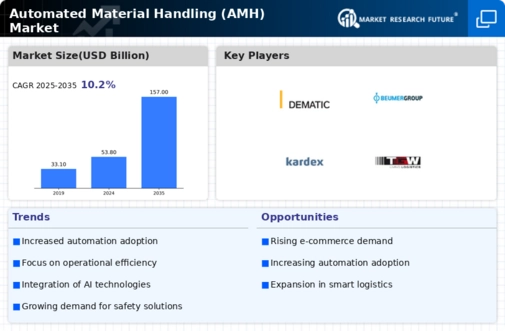
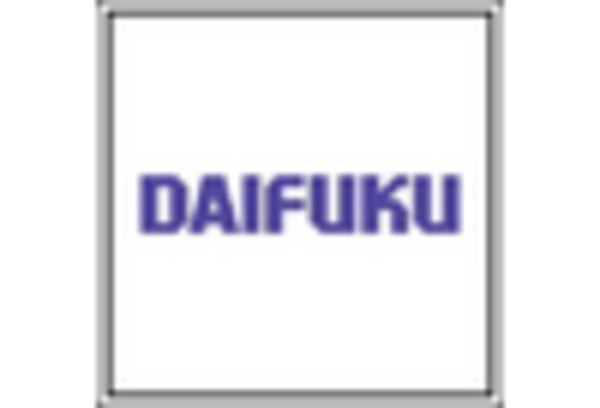
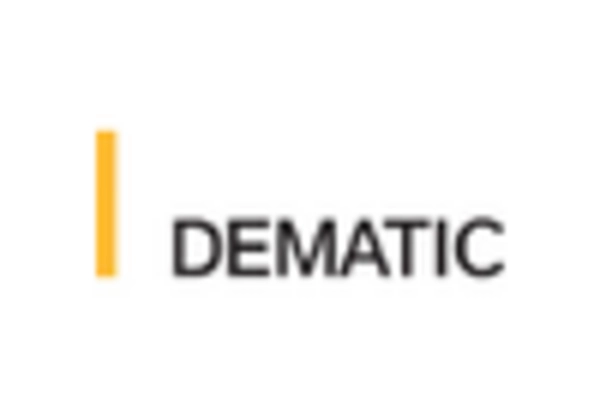

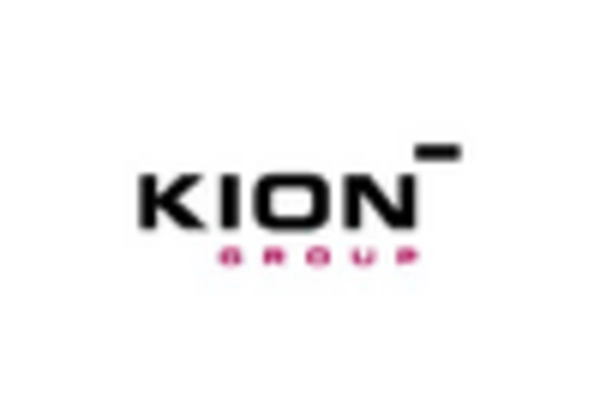
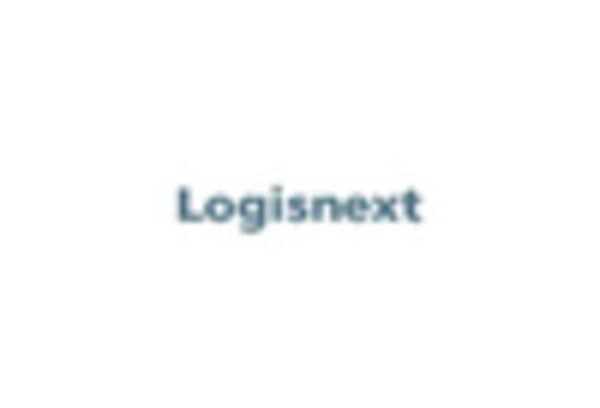










Leave a Comment